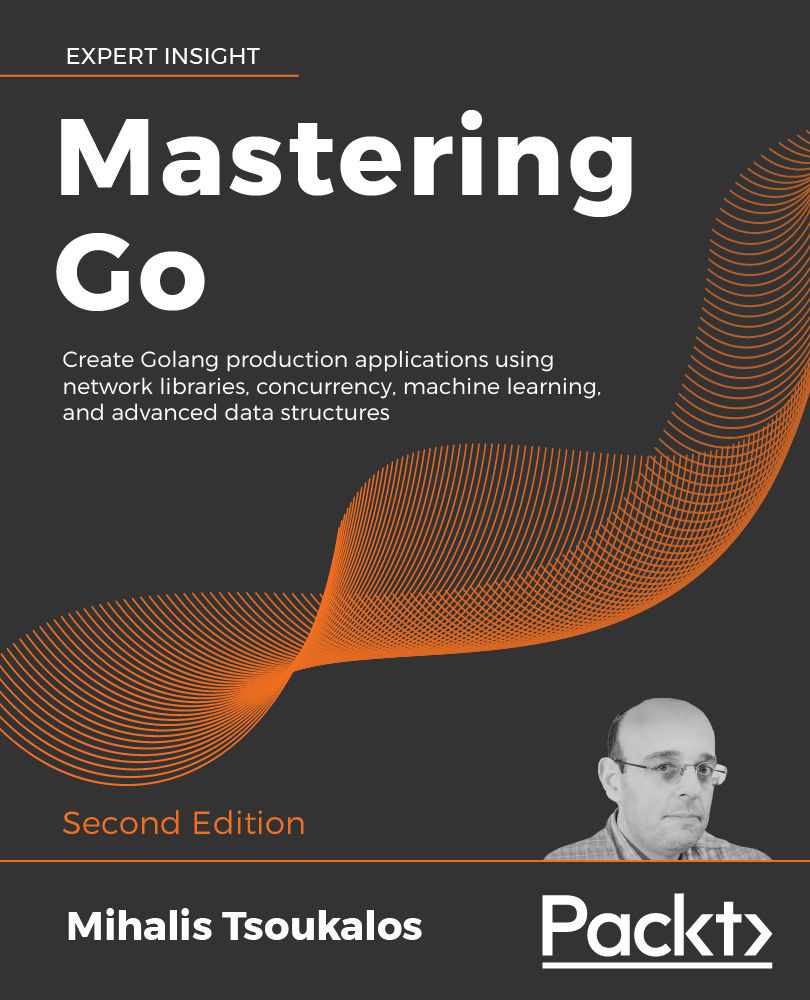This chapter is an introduction to various Go topics that beginners will find very useful. More experienced Go developers can also use this chapter as a refresher course on the fundamentals of Go. As it happens with most practical subjects, the best way to understand something is to experiment with it. In this case, experimenting means writing Go code on your own, making your own mistakes, and learning from them! Just don't let error messages and bugs discourage you.
In this chapter, you will learn about:
- The history and the future of the Go programming language
- The advantages of Go
- Compiling Go code
- Executing Go code
- Downloading and using external Go packages
- UNIX standard input, output, and error
- Printing data on the screen
- Getting user input
- Printing data to standard error
- Working with log files
- Using Docker to compile and execute a Go source file
- Error handling in Go


